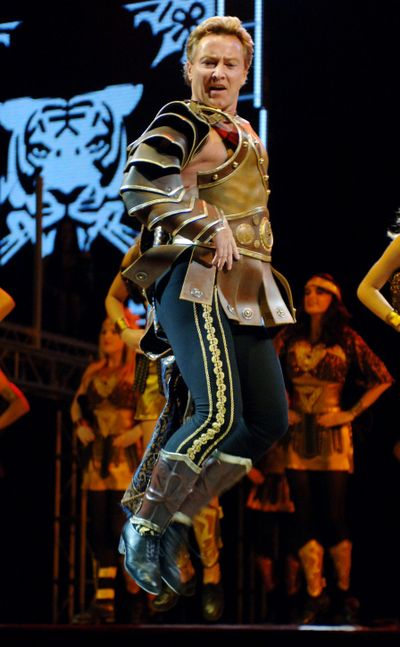Renowned revue comes to theaters

Michael Flatley may have been born and reared in Chicago, but the voice coming over the phone bears an unmistakable Irish brogue.
“What can I say?” he shrugs. “I’ve lived in Ireland since 1993. My parents were Irish. My wife is Irish. My son is Irish.
“So, yeah, I’m Irish.”
And as a son of Erin, the 52-year-old Flatley has cooked up a special St. Patrick’s Day gift for his fans.
Late last year he mounted a special tour of his hit Celtic revue “Lord of the Dance” so it could be captured in 3-D. The film opens today.
“Lord” was shot at performances in London, Dublin and Berlin. Up to two dozen 3-D film cameras were used at each performance, with camera operators given different assignments, whether it was to record certain dancers or audience reactions.
“I was very careful on a number of different issues,” Flatley said. “Just because it was in 3-D, I didn’t want to fall back on gimmicks or tricks. There are no legs flying in your face here.
“And it had to be shot in front of a live audience. Having an audience is vital for the integrity of the performance and for the energy we get on stage. And it’s also about chemistry, the connection of performer and viewer.”
Flatley, who became a household name for his work with “Riverdance,” said he was careful to ensure the best possible experience for his ticketholders.
“We didn’t want to upset the audience, which meant we were very limited in where we could place cameras,” he said. “The paying customers want to see the dancers, not have their view blocked by a camera crew.”
Flatley, a world step-dancing champion who has re-imagined that traditional Irish style for a new era, even redesigned the show for the filming.
“It was the biggest stage we’ve ever had – 80 feet from side to side. That allowed the cameras to come up on the stage,” he said.
“And now, for the first time, viewers can see what the view is like for the performers. You can see the expressions on people’s faces out in the house. It’s like being there.”
Flatley broke up the huge screen at the rear of the stage into several smaller, staggered screens to create more depth of field.
The biggest challenge, he said, was in training human bodies to perform complicated, wickedly fast dances with such precision that footage of a routine shot from different angles on different nights could be seamlessly assembled.
The cast of “Lord of the Dance” rehearsed for months to prepare. The result is unison tap work that borders on the unbelievable.
“Honestly, I’ve got the most gifted dance troupe in world,” Flatley said of his two dozen hoofers. “You’ll never know the endless hours of hard training that goes into perfecting these numbers. Having the troupe firing on all cylinders night after night – that was inspiring. …
“Before each performance I’d tell them, ‘Dance the best show you possibly can. Remember, every Christmas and Thanksgiving your parents and grandparents will take this show off the DVD shelf and make you watch it.’ ”
But the star here is Flatley, who holds the record as the world’s fastest tap dancer (35 taps per second) and who puts on a show so furious and intense that it nearly exhausts the viewer.
How does he do it?
Flatley laughed.
“It’s a lot of work. But I love what I do,” he said.
“Dancers must work against this idea that once you’re past a certain age you have to retire. That’s nonsense. The work may be harder, yes. Still, you’ve got to get up and do it.
“Work hard. Something good will happen.”